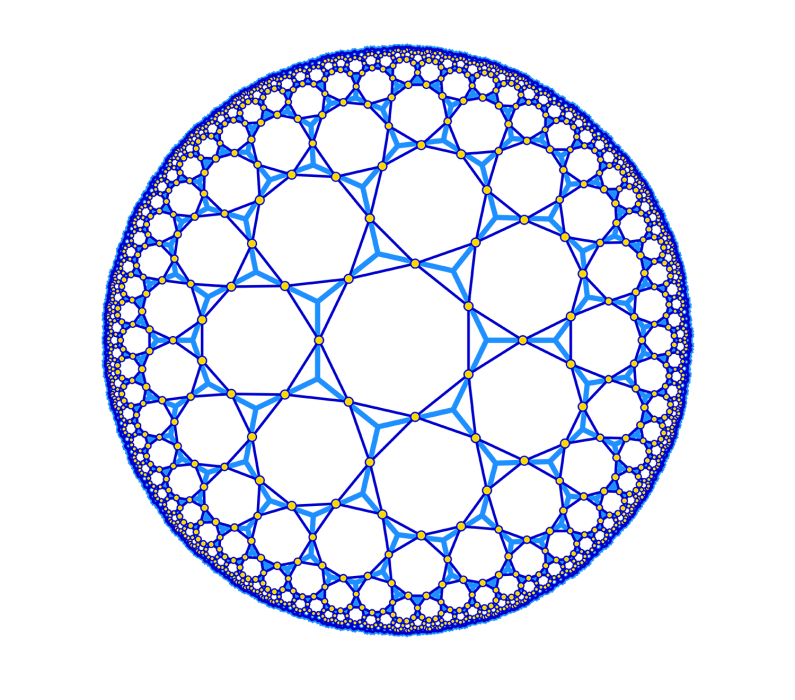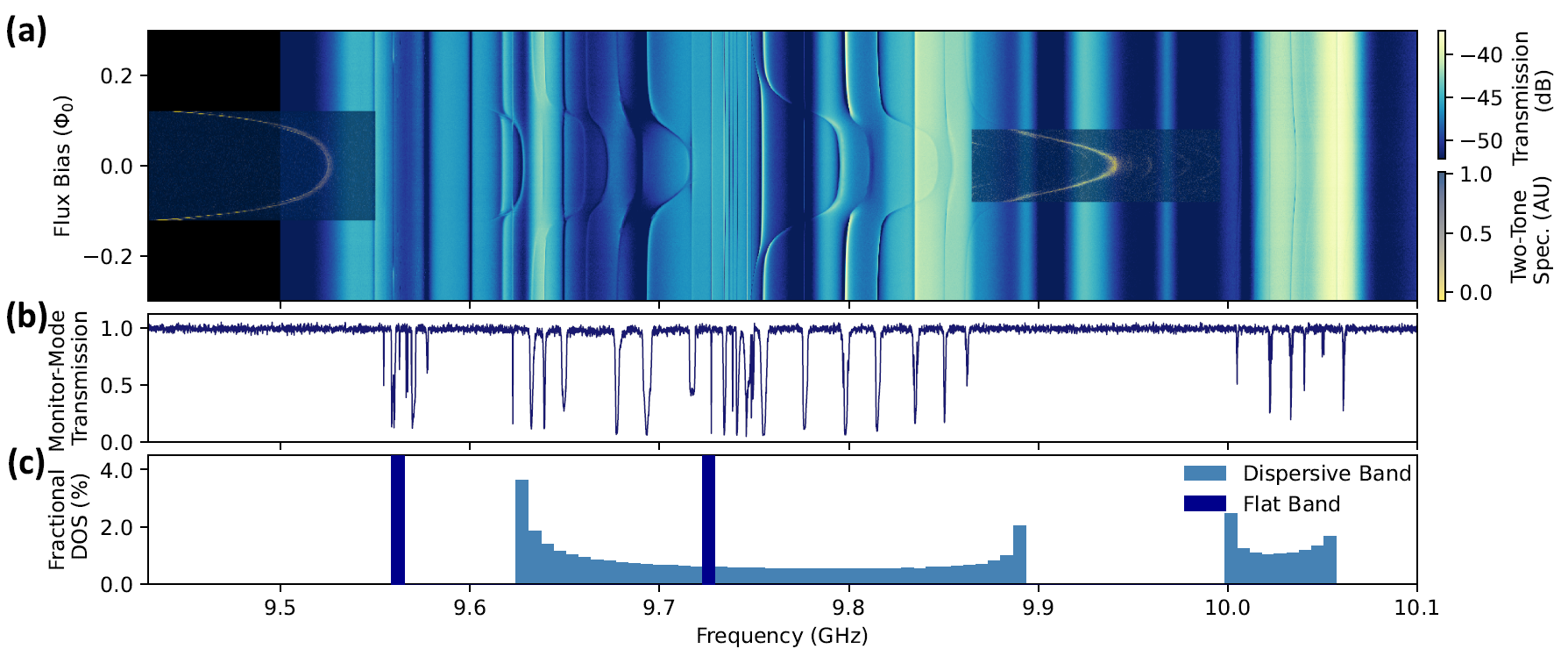
Hyperbolic Poincare Projection
The field of circuit QED has emerged as a rich platform for both quantum computation and quantum simulation. Lattices of coplanar waveguide (CPW) resonators realize artificial photonic materials in the tight-binding limit. Combined with strong qubit-photon interactions, these systems can be used to study dynamical phase transitions, many-body phenomena, and spin models in driven-dissipative systems. These waveguide cavities are uniquely deformable and can produce lattices and networks which cannot readily be obtained in other systems, including periodic lattices in a hyperbolic space of constant negative curvature, and the one-dimensional nature of CPW resonators leads to degenerate flat bands. In our lab, we build experimental implementations of these systems using superconducting circuits.
Postdoc and graduate student positions available! Send email to: akollar@umd.edu
Recent Physics Grad Sees Many Roads Ahead
As Jeffrey Wack walked across the graduation stage in May 2022, he carried with him a lot of uncertainty about where to go next. His trepidation came from his voracious curiosity for a broad range of things, primarily within physics and math—the subjects of his two degrees—but also from his interests in teaching, outreach and music. The prospect of having to pick just one path forward felt confining to Wack. But that same curiosity served him extremely well during his time at the University of Maryland, and it left him with many opportunities for next steps.
Research
Flat Bands

JQI Fellow Kollár Bridges Abstract Math and Realities of the Lab
The research of JQI Fellow Alicia Kollár, who is also a Chesapeake Assistant Professor of Physics at the University of Maryland, embodies the give and take between physics and mathematics. In her lab, she brings abstract theories to life and in turn collaborates on new theorems. She has forged a research program of manipulating light on a chip, coaxing the light into behaving as though it lives on the surface of a sphere, or a mathematical abstraction known as a hyperbolic surface. She also collaborates with mathematicians, furthering both the understanding of what these chips can do and their underlying mathematics. A direct collaboration with pure mathematicians is uncommon for a physicist, particularly an experimentalist. But Kollár is no stranger to mathematics.
Microscopy of Elongated Superfluids
Dissertation Committee Chair: Luis Orozco
Committee:
Alicia Kollar
Mohammad Hafezi (Dean’s rep)
William D. Phillips
Ian Spielman (Advisor)
Abstract:
Design and Construction of a Three-Node Quantum Network
Dissertation Committee Chair: Prof. Christopher Monroe
Committee:
Prof. Alicia Kollár
Prof. Norbert Linke
Prof. Steven Rolston
Prof. Ronald Walsworth
Abstract: